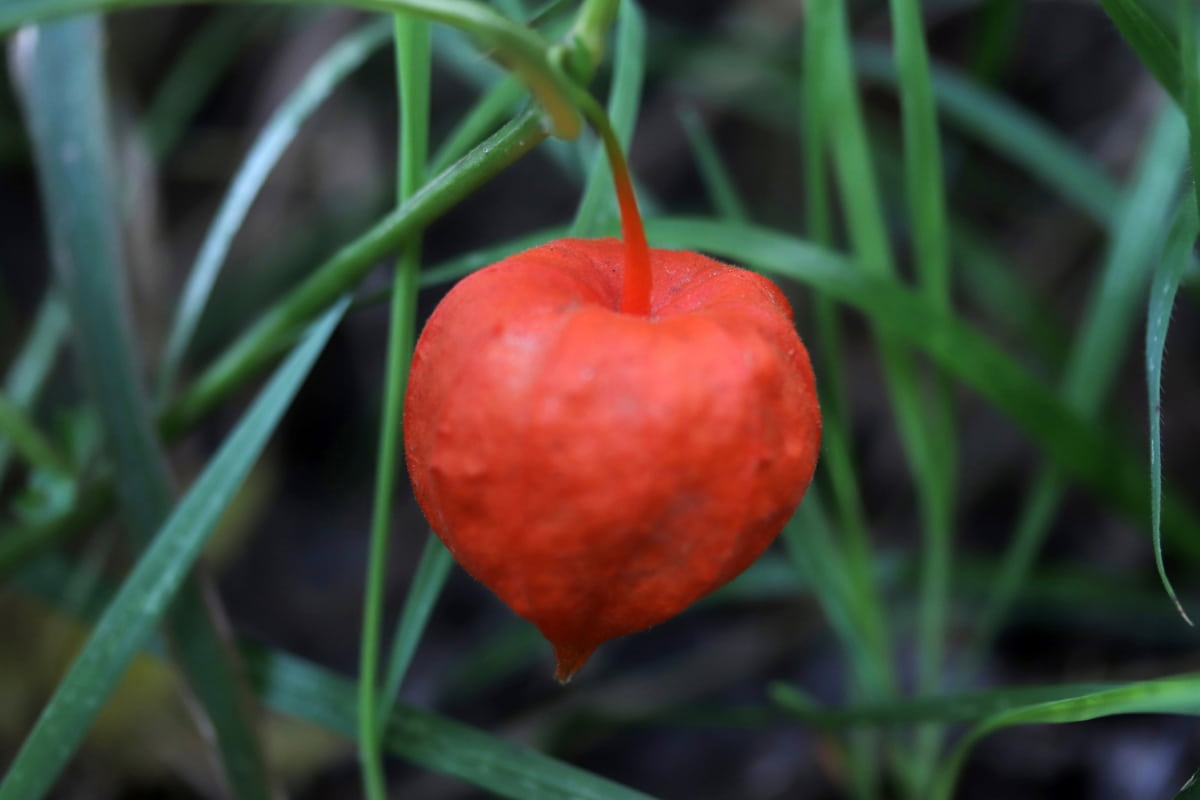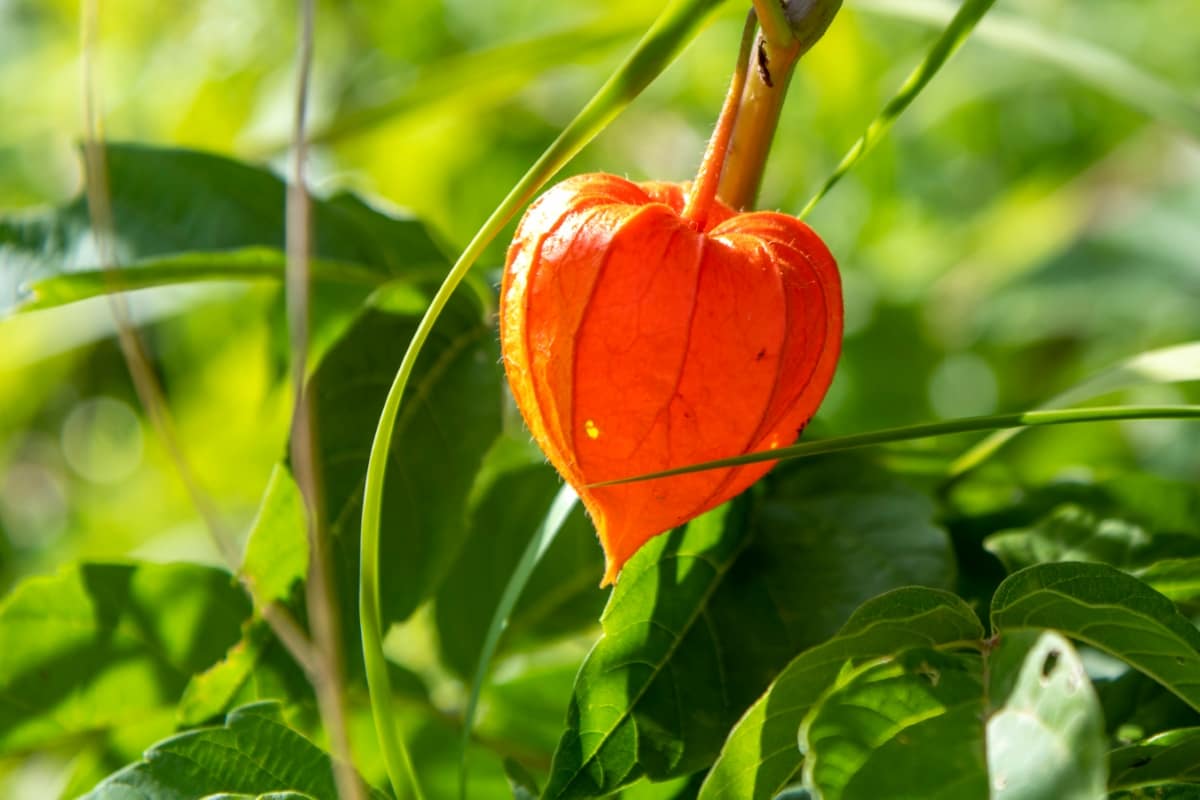The Chinese Lantern Plant is a perennial plant that belongs to the Solanaceae family. This plant grows up to three feet tall and produces small white flowers in early summer, followed by unique orange Lantern-like pods. The Chinese Lantern Plant is a fascinating addition to any garden or indoor space.

How to Grow and Care for Chinese Lantern Plant
Soil Requirements for Chinese Lantern Plant
It is a beautiful addition to any garden. To ensure its optimal growth, it’s important to understand the soil requirements for this plant. The soil’s pH should be between 6.6 and 7.3, which is slightly acidic to neutral.
Sunlight Requirements for Chinese Lantern Plant
- The Chinese Lantern Plant is a sun-loving plant that thrives in full sunlight. When planting this beautiful ornamental plant, it’s essential to consider the amount of direct sunlight it will receive.
- Chinese Lantern Plants require at least six hours of direct sunlight daily to grow and thrive. Therefore, you should choose a spot in your garden or home that receives full sun for most parts of the day.
- If you plan to grow Chinese Lantern Plants indoors, place them near a south-facing window where they can get maximum exposure to natural light. Supplemental lighting with LED Grow Lights is also an excellent option if your indoor space lacks adequate natural light.
- Choosing the right location with ample sunshine will ensure healthy growth and vibrant blooms for your Chinese Lantern Plant throughout its lifespan.
Watering Schedule for Chinese Lantern Plant
- Watering is an essential element in the care of Chinese Lantern Plants. It’s important to ensure these plants are watered consistently but not excessively. Overwatering the plant can cause root rot and other problems that could harm your plant.
- One way to ensure you’re correctly watering your Chinese Lantern Plant is by regularly checking the soil moisture level. Before watering the plant, stick your finger about 2 inches deep into the soil. If it feels dry at this depth, it’s time to water.
- During the summer or when temperatures are high, you may need to water more frequently as evaporation rates increase. However, during cooler months or when humidity levels are higher, you may be able to cut back on watering frequency.
- It’s also important to note that Chinese Lantern Plants prefer well-draining soils to avoid excessive moisture retention around their roots. Providing adequate and consistent moisture will help keep your Chinese Lantern Plant healthy and thriving for years.
Transplanting Chinese Lantern Plants Successfully
- Transplanting a Chinese Lantern plant can be an exciting and rewarding experience. It allows you to relocate your plant to an area where it will thrive better or allows you to propagate more plants from one parent plant. Before transplanting, ensure that the new location has similar soil conditions as the previous spot.
- To start, carefully loosen the soil around your plant’s root ball using a garden fork or trowel. Be gentle so as not to damage any roots during this process. Once loosened, gently lift the root ball out of its current location.
- Next, dig a hole in your desired planting location that is slightly larger than the size of your root ball. Place some compost or fertilizer at the base of this hole before placing your root ball inside. Once placed, firmly pack soil around all sides of your newly transplanted Chinese Lantern plant and water thoroughly until it settles.
Chinese Lantern Plant Care Tips
- Make sure to water your Chinese Lantern Plant regularly and consistently. The soil must be moist but not overly wet, which can lead to root rot. Ensure the container has holes in the bottom to allow excess water to drain.
- Place your plant in a bright spot where it can receive sunlight daily. However, avoid exposing it directly under harsh afternoon sun as this may scorch its leaves.
- Prune your plant regularly by pinching off dead or damaged leaves and branches. This will encourage new growth and maintain its shape.
- Fertilize the plant once every month during the growing season with balanced fertilizer rich in nitrogen-phosphorus-potassium (NPK) nutrients.
In case you missed it: Plants That Grow on Fences: Covering Chain Link Fences With Vines/Creepers for Privacy and Beauty

Pruning and Shaping Chinese Lantern Plants
- It is an important aspect of their care. Regular pruning can help maintain your plant’s shape and size, ensuring it remains healthy and attractive.
- When pruning your Chinese Lantern plant, it’s important to use sharp, clean tools to avoid damaging the plant. Start by removing any dead branches, as well as any growth that is crossing over or rubbing against other branches.
- You may need to prune your Chinese Lantern plant more aggressively to shape it into a particular form. However, be careful not to remove too much foliage at once; gradual shaping over time is better for the plant’s health.
Fertilizing Chinese Lantern Plants for Optimal Growth
- Fertilizing is an essential aspect of caring for your Chinese Lantern plant. It ensures the plant receives the nutrients required for optimal growth and development.
- Before fertilizing, ensure you have conducted a soil test to determine which nutrients are lacking. You can then choose the right fertilizer blend that will provide these nutrients.
- Organic fertilizers work best for Chinese Lantern plants. These natural options improve soil quality without causing damage from harsh chemicals found in synthetic alternatives.
- To prevent overfertilization, follow recommended application rates and frequency specified by the manufacturer on the product label. Overfertilization can cause burns to leaves, reduce fruit production, or even kill your plant.
Common Pests, Diseases, and Their Control for Chinese Lantern Plants
- One of the most common issues is aphids. These tiny insects suck the sap from your plant’s leaves, causing them to curl and turn yellow. You can control aphids by spraying your plant with soapy water or neem oil.
- Another pest that may attack your Chinese Lantern plant is spider mites. These arachnids feed on the underside of leaves, leaving behind small white spots and fine webbing. To prevent and control spider mites, spray your plant with insecticidal soap or predatory insects like ladybugs.
- Carefully watch out for pests such as spider mites, mealybugs, or scale insects that might infest your plants; control them using insecticidal soap or neem oil spray.
- Fungal diseases like powdery mildew and botrytis blight can also affect Chinese Lantern plants. Prune affected plant parts immediately to prevent further spreading, improve air circulation around them, avoid watering overhead if possible, and apply an appropriate fungicide.
Harvesting and Drying Chinese Lantern Plant Pods
- After growing and caring for your Chinese Lantern plant, harvesting and drying the pods is the next step. Chinese Lantern plants produce beautiful orange-red papery pods that can be used in various ways.
- The best time to harvest the pods is when they are fully matured, usually towards the end of summer or early fall. You will notice that the Lanterns have turned from green to their vibrant orange-red color.
- To harvest them, carefully cut off the entire stem that holds the pod using sharp scissors or pruning shears. To ensure you get high-quality dried pods, avoid picking those with signs of damage or decay.
- Once harvested, remove any leaves attached to them and rinse thoroughly with water. Dry them in a well-ventilated area away from direct sunlight until completely dry and crisp.
- You can use these dried pods as part of your home décor by putting them in vases or bowls or creating unique centerpieces for special occasions.
In case you missed it: Plant Spacing Chart for Vegetables, Fruits, Flowers, and Herbs

Conclusion
Chinese Lantern plant is a popular houseplant that can be grown in various environments. The plant requires bright light and moderate humidity and should be watered regularly but not overwatered. Growing Chinese Lantern plants indoors can be a rewarding experience for those who enjoy gardening but don’t have access to an outdoor space. These beautiful plants can thrive inside your home year-round with proper care and attention.
- Feed Your Flock for Less: Top 10 Tips to Save on Chicken Feed
- Ultimate Guide to Ossabaw Island Hog: Breeding, Raising, Diet, and Care
- Hatching Answers: The Top 10 Reasons Your Chickens Aren’t Laying Eggs
- Eggs and Economics: Breaking Down the Cost of Raising Backyard Chickens
- Defend Your Greens: Proven Methods to Keep Iguanas Out of Your Garden
- Ultimate Guide to Cinnamon Queen Chicken: A Comprehensive Guide for Beginners
- Ultimate Guide to California Tan Chicken: Breeding, Raising, Diet, Egg-Production and Care
- Ultimate Guide to Marsh Daisy Chicken: Breeding, Raising, Diet, and Care
- 10 Types of Chicken Farming Businesses You Can Start for Profits